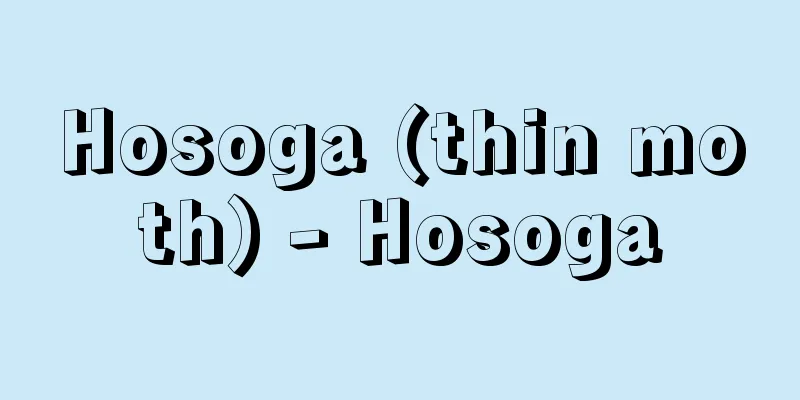Fruiting body

|
This refers to the spore-forming bodies of fungi, but their structure shows differentiation (morphological and functional specificity). The relatively large fruiting bodies of Basidiomycetes and Ascomycetes are what we call mushrooms. Fruiting bodies occur on or near substrates containing organic matter, and can also form above or underground. The structure of fruiting bodies is described below. (1) In basidiomycetes, the haploid hyphae arising from the basidiospores join with compatible haploid hyphae to form a heterhyphae containing two nuclei in the cells, and the fruiting body is formed on this heterhyphae, or on the hyphal bundles or sclerotia consisting of heterhyphae. First, a tiny mass of hyphae (fruiting body primordia) is formed in response to a change in the environment, and then as the primordia grows, the cells differentiate to form the fruiting body consisting of various tissues. In the basidiomycete cells arranged in a specific part of the fruiting body (the surface of the folds under the cap in the case of shiitake mushrooms, for example), the two nuclei fuse and undergo meiosis, and the four nuclei thus produced become the nuclei of four basidiospores that form at the tips of the basidiom. (2) The fruiting body primordia of ascomycetes such as the Chauhan fungi are formed by sexual stimulation between two compatible haploid hyphae. When conjugation occurs within the primordium to produce a hemispheric hyphae (sporangium), nuclear fusion and meiosis are followed by nuclear division in the ascocysts that form at the end of the primordium. The eight nuclei thus produced become the nuclei of eight ascospores that form within the ascus. The sporangium is nourished by the haploid hyphae, which, together with the sporangium, form hyphal tissue to form the fruiting body. (3) Among the zygomycetes, only the Polytrichum communes form fruiting bodies underground, which are masses up to a few centimeters in diameter and contain chlamydospores, sporangia, or zygospores within their hyphal tissue. (4) Myxomycetes do not have mycelium, but the plasmodium containing multiple nuclei forms the fruiting bodies. Of these, Dictyostelium produces resting spores on the surface of the cylindrical or dendritic fruiting bodies up to 1 cm in height (naked fruiting bodies), while other Myxomycetes produce spores inside (caryophyte fruiting bodies). Some caryophyte fruiting bodies are clump-like, while others, such as Dictyostelium purpurea, have dense stalk-bearing sporangia growing on a common base. (5) In cellular slime molds, fruiting bodies are formed by pseudoplasmodia, which are densely packed single-celled bodies that move around. The fruiting bodies of Dictyostelium discoideum and other organisms consist of a stalk up to 3 cm high and a resting spore mass at the end of the stalk. Since they are formed by the accumulation of single-celled bodies, they are called cumulative fruiting bodies. (6) In the case of myxobacteria, various fruiting bodies are formed from pseudoplasmodia. In complex ones, numerous membrane-enclosed dormant spore masses are produced at the ends of branched stalks, but the total height is only a fraction of a centimeter. [Hironori Terakawa] [Reference items] | | |Source: Shogakukan Encyclopedia Nipponica About Encyclopedia Nipponica Information | Legend |
|
菌類の胞子形成体をいうが、その構造には分化(形態的・機能的な特異性)がみられる。担子菌類と子嚢(しのう)菌類の比較的大きい子実体は、いわゆるキノコとよばれているものである。子実体は有機物を含む基物、あるいはその付近に生じ、地上や地中にも形成される。以下、子実体の構造について述べる。 (1)担子菌類では、担子胞子から生じた単相菌糸が和合性のある単相菌糸と接合し、細胞に2核を含む重相菌糸となり、この重相菌糸、または重相菌糸からなる菌糸束、あるいは菌核上に子実体が形成されていく。まず、環境の変化が刺激となって微小な菌糸塊(子実体原基)が形成され、やがて原基の成長に伴って細胞が分化し、いろいろの組織からなる子実体ができる。子実体の特定の部分(シイタケなどの場合は傘の裏のひだの表面)に並ぶ担子器細胞内では、2核の癒合と減数分裂が行われ、これから生じた四つの核はそれぞれ担子器の先端上にできる四担子胞子の核となる。 (2)チャワンタケ類のような子嚢菌類の子実体原基は、和合性のある2種類の単相菌糸相互の性的刺激によって形成されていく。原基内で接合が行われて重相菌糸(造嚢糸)が生じると、その先にできた子嚢細胞内で核癒合と減数分裂に続く核分裂が行われる。こうして生じた八つの核はそれぞれ子嚢内にできる八つの子嚢胞子の核となる。造嚢糸は単相菌糸に養われ、単相菌糸は造嚢糸とともに菌糸組織をつくって子実体を形成する。 (3)接合菌類では、アツギケカビ類だけが子実体を地中に形成する。この子実体は直径数センチメートル以内の塊状で、その菌糸組織内に厚壁胞子、胞子嚢または接合胞子を含んでいる。 (4)変形菌類には菌糸体がなく、多核を含む変形体が子実体を形成する。このうち、ツノホコリカビ類は高さ1センチメートル以内の柱状、樹状などの子実体の表面に休眠胞子を生ずる(裸実子実体)が、その他の変形菌類の場合は内部に胞子をつくる(被実子実体)。被実子実体には塊状のものもあれば、ムラサキホコリカビなどのように柄(え)のある胞子嚢が共通の基盤上に密生するものもある。 (5)細胞粘菌類では、単細胞体が密集して移動する偽(ぎ)変形体によって子実体が形成される。タマホコリカビなどの子実体は、高さ3センチメートル以内の柄とその先の休眠胞子塊からなるが、単細胞体が積み重なってできたものであるため、累積子実体といわれる。 (6)粘液細菌類の場合も、偽変形体から種々の形の子実体が形成される。複雑なものになると、分岐した柄の先に膜で包まれた休眠胞子塊を多数生ずるが、全体の高さは1センチメートルの数分の1程度である。 [寺川博典] [参照項目] | | |出典 小学館 日本大百科全書(ニッポニカ)日本大百科全書(ニッポニカ)について 情報 | 凡例 |
<<: Practice as fact - Practice as fact
>>: Factual and legal review - jijitsushinhouritsushin
Recommend
Yan Fu
Born: 1853 [Died] 1921 A Chinese thinker and trans...
Ieya - Squid
…The Liangshan region is a large settlement area,...
Metanephros
…In cyclostomes, cartilaginous fish, bony fish, a...
Pratyekabuddha
The Buddhist term is used to refer to the state in...
Panoramic potentiometer
...This can be caused by electromagnetic inductio...
Boorstin, DJ (English spelling) BoorstinDJ
…The library also focuses on collecting materials...
Stilbum cyanurum pacificum (English name) Stilbum cyanurumpacificum
…[Shiro Katsuya]. . . *Some of the terms mentione...
Kintouji - Kintouji
…It is widely distributed in the western Pacific ...
Skeletal soil
This is a virgin soil that does not show a clear s...
Okane - Money
…Also written as Okane. She was a prostitute who ...
Cockscomb bigscale fish
A marine fish belonging to the order Alfonsinophy...
Kawachi - Kawachi
…a culture based on the southern coast of Peru be...
Abridged version of the Eighteen Histories (English: Shi-ba shi-lüe; Shih-pa shih-lüeh)
A popular Chinese history book. Written by Zeng Xi...
concilium provinciae
…In the east, he made peace with Parthia, made Ga...
Wolfgang Borchert
German poet and playwright. He was one of the so-...


![Wheeler & Wilson [Company] - Wheeler and Wilson](/upload/images/67cf7e6bc31a6.webp)



![Ciba-Geigy [Company] (English name) CIBA-GEIGY AG](/upload/images/67cc2f109d653.webp)


